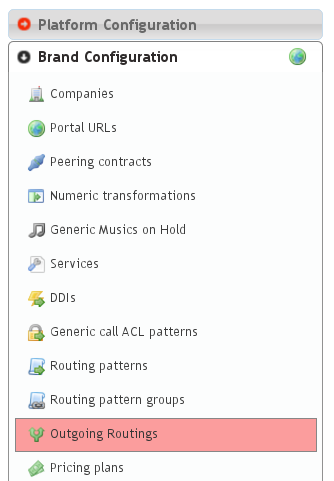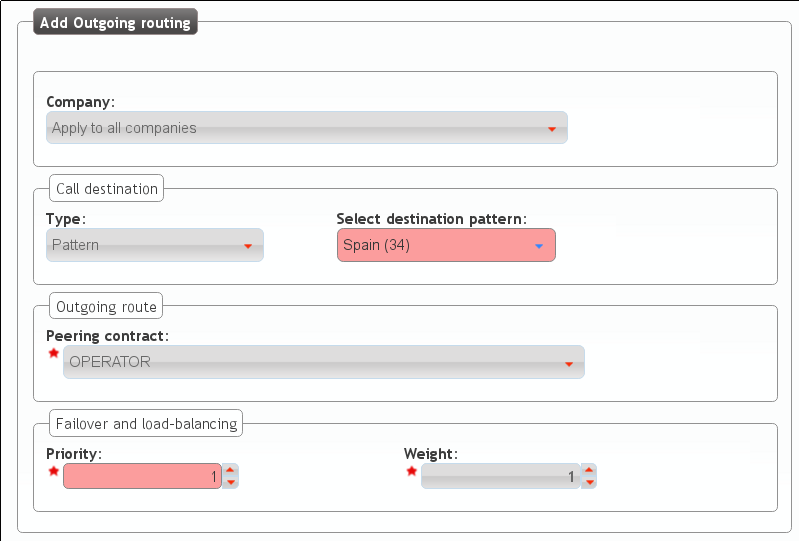We already have our test call categorized as a call within the Target pattern ‘Spain’. In addition, we also have a Target pattern group including ‘Spain’, called ‘Europe’.
Now we have to tell IvozProvider that calls to ‘Spain’ or ‘Europe’ should be established through our Contract Peering.
Outgoing Routing¶
To make this assignment, we use the section Outgoing routing:

If we choose routing ‘Spain’ calls only through our Peering contract, we will make this configuration:

On the other hand, if we are more generous and we decide to place calls to all european countries, we would make this configuration:

Two parameters deserve an explanation in this section:
- Priority
- If a call matches several routes, it will be placed using the outgoing route with lower priority, as long as it is available.
- Metric
- If a call matches several routes with equal priority, metric will determine the proportion of calls that will use one route or another.
Note
This are the key parameters to achieve two interesting features: load-balancing and failover-routes.
Load balancing¶
Load-balancing lets us distribute calls matching the same pattern using several valid outgoing routes.
Example 1
- Route A: priority 1, metric 1
- Route B: priority 1, metric 1
Call matching these routes will use route A for %50 of the calls and route B for %50 of the calls.
Example 2
- Route A: priority 1, metric 1
- Route B: priority 1, metric 2
Call matching these routes will use route A for %33 of the calls and route B for %66 of the calls.
Failover routes¶
Failover route lets us use another route whenever the main route fails.
Example
- Route A: priority 1, metric 1
- Route B: priority 2, metric 1
All calls matching these routes will try to use route A. In case the call fails, the call will be placed using route B.
Tip
Although given examples use two routes, more routes can be chained and failover and load-balancing estrategies can be combined.